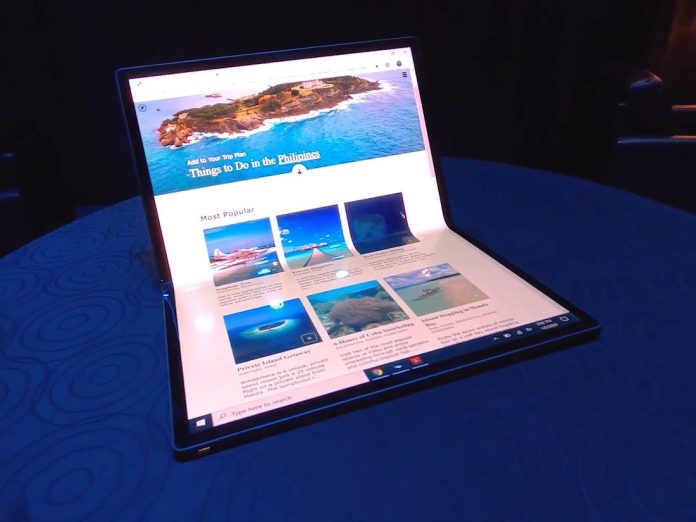Intel is furiously pushing in the direction of releasing its laptops as it begins to lose traction in the PC industry with the introduction of proprietary chipsets from companies such as Apple, Qualcomm, and AMD. But the chip maker’s laptop is not going to power the mill. The company showed off the Horseshoe Bend prototype at CES last year but this year, Intel’s foldable laptop could become a reality. Intel is reported to launch foldable display notebooks in the second half of 2021.
Intel will use its in-house chipsets to power these notebooks, which will open up new use cases that the company envisaged with the concept last year. It is also likely that Intel will begin to supply these chipsets to PC manufacturers, bringing a new lease of life to notebooks that have remained more or less the same for quite some time. Although companies such as Lenovo, Razor, and Asus have attempted outlandish features such as a second panel, foldable displays would be game-changers.
Intel is said to have entered the final stage in the production of foldable display notebooks. These notebooks would cost north of TWD 70,000. This is mirrored in the shyness of Rs 2 lakh, which is not too much considering the technology that the laptop would offer. The top-of-the-line PC or MacBook is around the same price in India. But even the specs of Intel’s foldable screen laptops are not verified.
Last year, Intel demoted the Horseshoe Bend concept system with an OLED monitor. The computer is going to fold from the middle and lacks a physical keyboard. Particularly if the way it is twisted is identical to conventional laptops. There is also a surface-style kickstand that can be used to use a full-size monitor using a wireless mouse. This project is designed on the 10nm Tiger Lake architecture that is now available on a range of laptops. But the one that Intel is said to be developing may have a newer processor.
Having a foldable monitor would change the interface, which would enable the operating system to operate accordingly. Intel’s Horseshoe Bend ran on Windows 10 but the company suggested that Windows 10X would perform best on this type factor. This gives us the impression that Intel could use the latter for its bendable monitor notebooks. Microsoft’s Windows 10X is designed for use on computers that are not conventionally run, which is why it could be ideal for Intel devices. Right now, there’s no way to validate what’s going on, which is why readers are encouraged to treat this news with a grain of salt.

